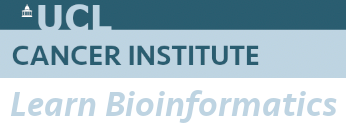ChIP-seq is a powerful technique used to analyze interactions between proteins (typically transcription factors) and DNA at a genome-wide scale. It aims to identify specific DNA regions that are bound by the protein of interest and gain insights into gene regulation and chromatin structure.
Key steps in ChIP-seq data analysis include:
Below we have included some of the common tools used for ChIP-Seq data analysis. At this point you should be able to follow their manuals and run these tools in the command line. We have also included a hands-on tutorial if you need more help, as well as another helpful resource below.
 Peak calling
Peak calling
Unusually, many of the command line tools for analysing ChIP data are more commonly used than the R packages and libraries. Chief among these is MACS software which is used to call ChIP peak regions. There is a very new version MACS3 but still the commonest version is MACS2 which is still similar to use. This course teaches how to use MACS2 to call peaks
 Peak annotation
Peak annotation
Another key command line tool is bedtools which after you define peaks using MACS can be used for merging, intersecting, counting or shuffling of peaks from multiple ChIP replicates or samples. This tutorial contains clearly written material on how to use it.
 Summary plots
Summary plots
Finally many ChIP plots will average signals relative to peak centres, or relative to genomic features such as gene promoters or transcription factor binding sites (TFBS). There are a myriad of tools for doing this in R - but no single package is as prevalent as the command line alternative deepTools. Similarly the best place to start is not the manual but the step-by-step examples
 Hands-on ChIP-seq tutorial
Hands-on ChIP-seq tutorial
This hand-on tutorial develop ed by Morgane Thomas-Ch olier is a command-line based workflow that, although it's a bit ou tdated, covers most of the typical steps in ChIP-Seq data analysis and can be used as a guide.
 ChIP-seq resources
ChIP-seq resources
The ChIP-seq analysis repository by crazyhottommy is an excellent compilation of tools for ChIP-seq data analysis

